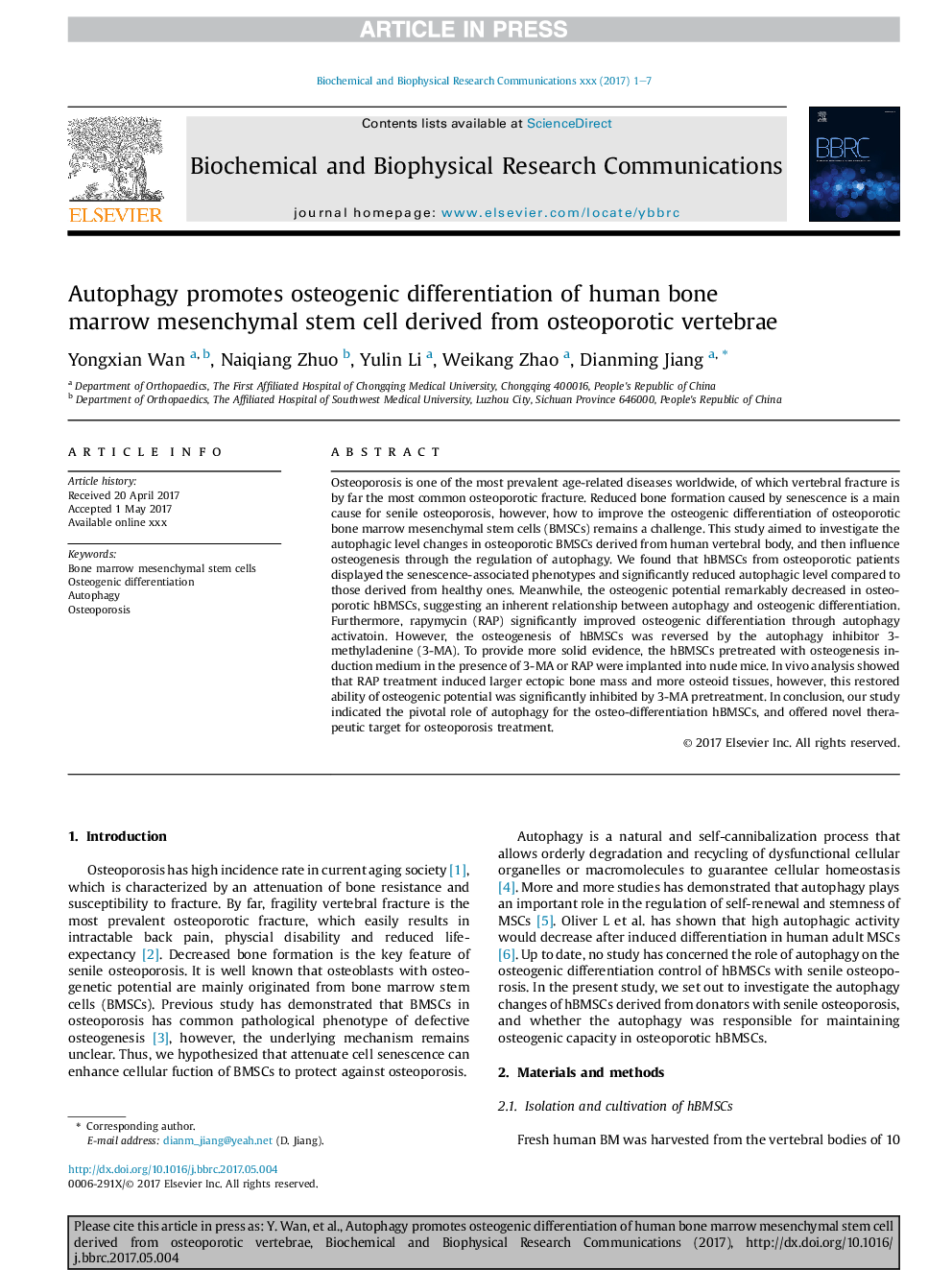| Article ID | Journal | Published Year | Pages | File Type |
|---|---|---|---|---|
| 5505490 | Biochemical and Biophysical Research Communications | 2017 | 7 Pages |
Abstract
Osteoporosis is one of the most prevalent age-related diseases worldwide, of which vertebral fracture is by far the most common osteoporotic fracture. Reduced bone formation caused by senescence is a main cause for senile osteoporosis, however, how to improve the osteogenic differentiation of osteoporotic bone marrow mesenchymal stem cells (BMSCs) remains a challenge. This study aimed to investigate the autophagic level changes in osteoporotic BMSCs derived from human vertebral body, and then influence osteogenesis through the regulation of autophagy. We found that hBMSCs from osteoporotic patients displayed the senescence-associated phenotypes and significantly reduced autophagic level compared to those derived from healthy ones. Meanwhile, the osteogenic potential remarkably decreased in osteoporotic hBMSCs, suggesting an inherent relationship between autophagy and osteogenic differentiation. Furthermore, rapymycin (RAP) significantly improved osteogenic differentiation through autophagy activatoin. However, the osteogenesis of hBMSCs was reversed by the autophagy inhibitor 3-methyladenine (3-MA). To provide more solid evidence, the hBMSCs pretreated with osteogenesis induction medium in the presence of 3-MA or RAP were implanted into nude mice. In vivo analysis showed that RAP treatment induced larger ectopic bone mass and more osteoid tissues, however, this restored ability of osteogenic potential was significantly inhibited by 3-MA pretreatment. In conclusion, our study indicated the pivotal role of autophagy for the osteo-differentiation hBMSCs, and offered novel therapeutic target for osteoporosis treatment.
Related Topics
Life Sciences
Biochemistry, Genetics and Molecular Biology
Biochemistry
Authors
Yongxian Wan, Naiqiang Zhuo, Yulin Li, Weikang Zhao, Dianming Jiang,
